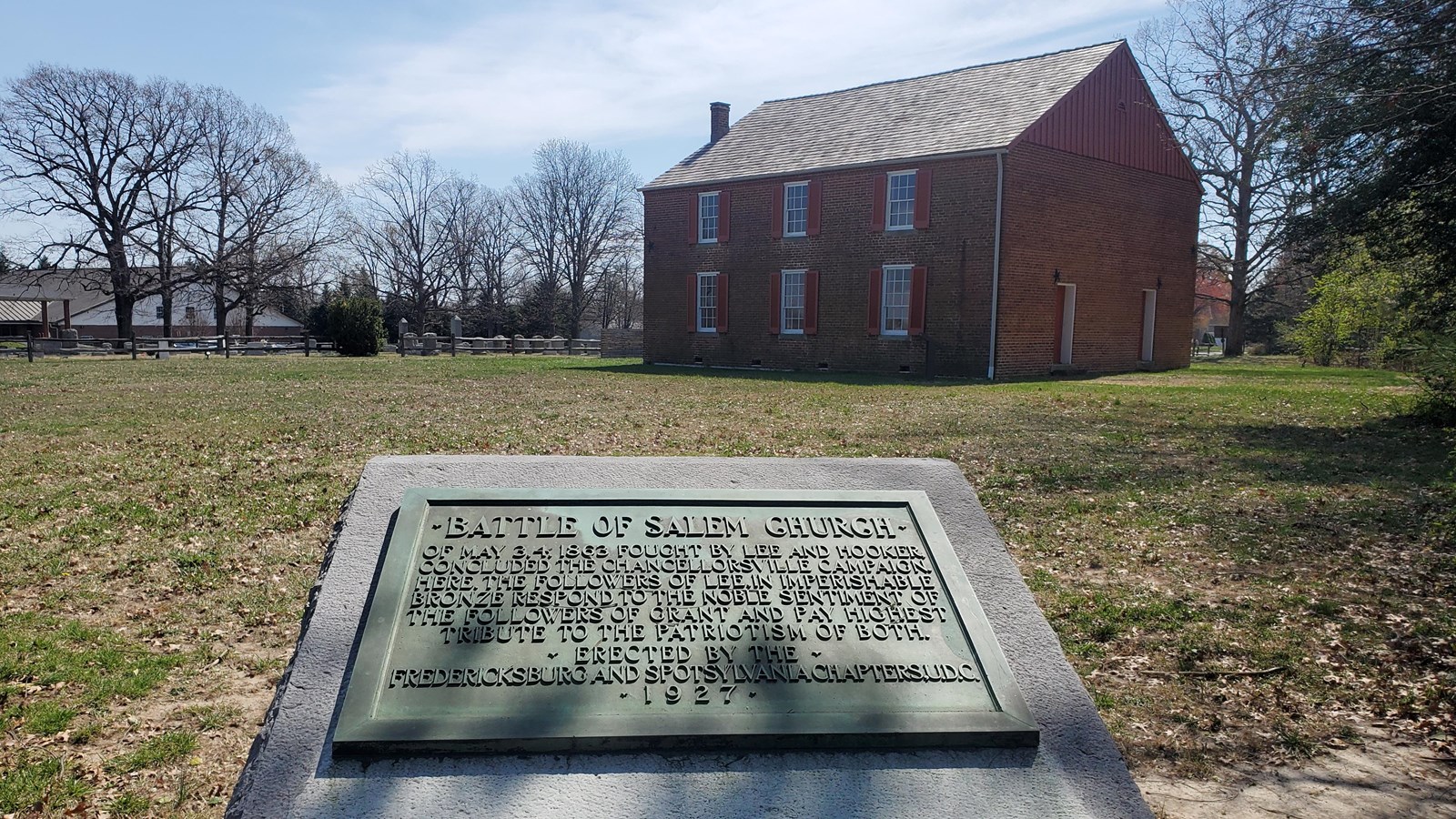Last updated: August 24, 2025
Place
UDC Monument - Battle of Salem Church

NPS Photo
After the Battle of Fredericksburg, the Union and Confederate armies encamped on opposite sides of the town, separated only by the Rappahannock River. In late April 1863, the U.S. Army of the Potomac’s new commander, General Joseph Hooker, embarked on a campaign that he hoped would catch General Robert E. Lee’s Confederate Army off guard. This campaign would lead to fighting over the grounds of Salem Church.
The Battle of Salem Church
General Hooker left about 23,000 men in Fredericksburg under the command of General John Sedgwick, while he led the rest of the U.S. army northwest along the rivers. Once well behind Confederate lines, Hooker planned to move his army east down the Orange Turnpike toward Fredericksburg and catch the Confederates between the two pieces of his army. Joseph Hooker faced no major setbacks until May 1, when part of Lee’s army advanced west from Fredericksburg and engaged with U.S. forces near Chancellorsville, six miles west of here. Lee left 10,000 soldiers under General Jubal Early in Fredericksburg to hold Sedgwick’s force in place.
For the next four days, an intense battle raged around the small hamlet of Chancellorsville. On the night of May 2, Hooker sent word to Sedgwick in Fredericksburg, ordering him to cross the Rappahannock River opposite the town and move west to Chancellorsville. He also told Sedgwick to “attack and destroy any force you may fall in with on the road.”
The next day, Sedgwick’s men successfully routed the Confederates positioned on Marye’s Heights in Fredericksburg. Afterwards, Sedgwick stopped to reorganize his forces, which provided the Confederates with time to orchestrate a defense. General Cadmus Wilcox’s Alabama brigade formed a battle line here at Salem Church, using the advantageous ridge on which the church stood. Confederate riflemen positioned in the church’s upper gallery windows awaited Sedgwick’s advance.
Around 3 pm in the afternoon, Sedgwick’s force moved down the Orange Turnpike and crested the ridge up to Salem Church. The Confederates counterattacked and drove Sedgwick’s men back down the hill. The next day, Sedgwick’s odds worsened considerably when thousands of Confederates arrived from Chancellorsville, forcing him to cross over the Rappahannock River to the north. Knowing that Sedgwick would no longer be able to offer relief, Joseph Hooker withdrew his army over the river on the night of May 5, bringing the Battle of Chancellorsville to a hasty end.
Remembering the Battle of Salem Church
This monument, erected by the United Daughters of the Confederacy in 1927, recognizes the actions that took place here in May 1863. Yet, it also helps us understand how our nation has remembered Salem Church over time. During its dedication, Southern historian Douglas Southall Freeman recognized the heroism of both armies but explained that the area’s battlefields represent the “military genius of the leader of the Southern Confederacy, General Robert E. Lee.” How might US veterans remember this place differently? What does this monument tell us about the people who had access to this space in 1927?Monument Description
The monument consists of a bronze tablet that rests atop a granite block base. Text on the bronze tablet reads:OF MAY 3, 4, 1863 FOUGHT BY LEE AND HOOKER,
CONCLUDED THE CHANCELLORSVILLE CAMPAIGN.
HERE, THE FOLLOWERS LEE, IN IMPERISHABLE
BRONZE RESPOND TO THE NOBLE SENTIMENT OF
THE FOLLOWERS OF GRANT AND PAY HIGHEST
TRIBUTE TO THE PATRIOTISM OF BOTH.
ERECTED BY THE
FREDERICKSBURG AND SPOTSYLVANIA CHAPTERS, U.D.C.
1927
